9.2 /10 1 Votes9.2
4.2/5 Google Play Composer(s) Scott Lloyd Shelly | 10/10 Steam 4.6/5 iTunes - Apple Initial release date 16 May 2011 | |||||||||||||||||||||||||||||||||
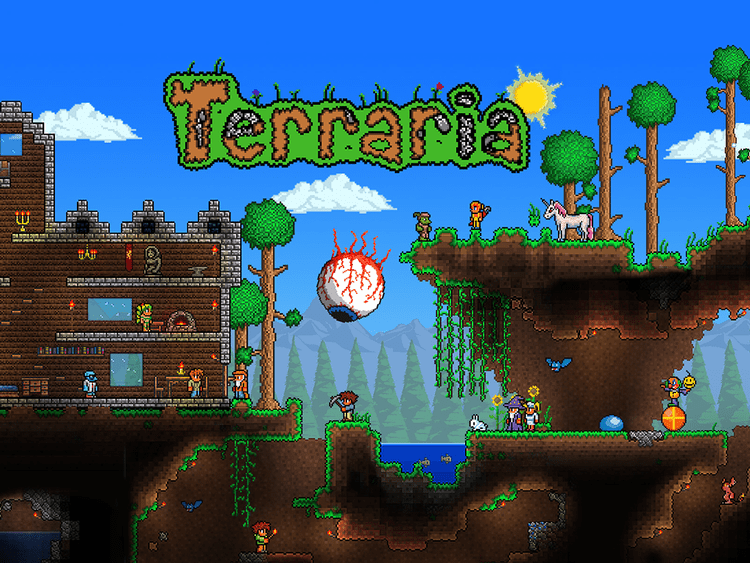 | ||||||||||||||||||||||||||||||||||
Distributor(s) Microsoft WindowsEU: Merge Games Designer(s) Andrew SpinksWhitney Baird Programmer(s) Yorai OmerChris Bednarz Artist(s) Jim KjexrudVictor MouraJamison Hayes Genres Action-adventure game, Survival game Modes Single-player video game, Multiplayer video game Similar Open world games, Other games | ||||||||||||||||||||||||||||||||||
Let s play terraria part 1 intro
Terraria is a 2D action-adventure sandbox video game developed by Re-Logic. The game was initially released for Microsoft Windows in May 2011, and has since been released for various other platforms and devices. Gameplay of Terraria features exploration, crafting, building, and combat with a variety of creatures in a procedurally generated 2D world. Terraria received generally positive critical reception upon release, with direct comparisons to Minecraft and praise given to its sandbox elements. By February 2017, the game had sold over 20 million copies across every platform.
Contents
- Let s play terraria part 1 intro
- Minecraft vs terraria video game rap battle vgrb jt machinima
- Gameplay
- Development and release
- Reception
- Sales
- Sequels
- References
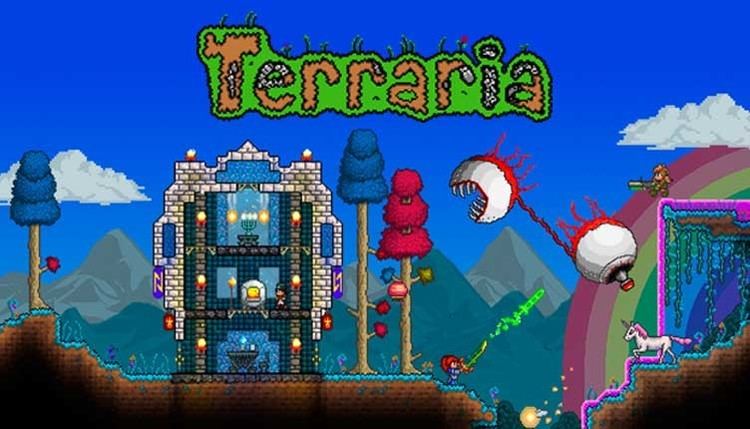
Minecraft vs terraria video game rap battle vgrb jt machinima
Gameplay
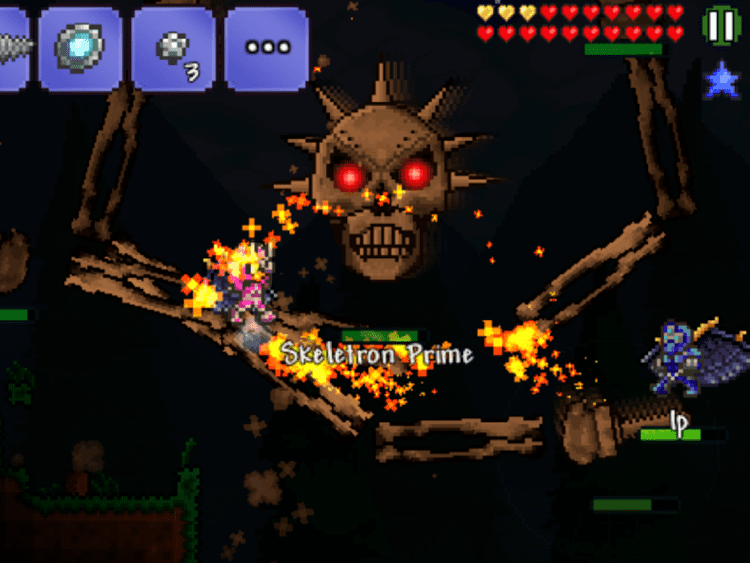
Terraria is a sandbox 2D game with gameplay that revolves around exploration, building, and combat. The game has a 2D sprite tile-based graphical style reminiscent of the 16-bit sprites found on the Super NES. The game is noted for its classic exploration-adventure style of gameplay, similar to titles such as the Metroid series and Minecraft.
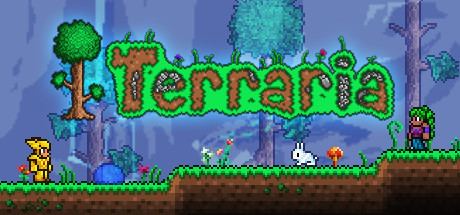
The game starts in a procedurally generated world. The player starts with three basic tools: a pickaxe for mining, a shortsword for combat, and an axe for woodcutting. Many resources, notably ores, can be found while mining or exploring underground caves. The player begins with a limited amount of health and magic points, which can both be increased by finding certain items by exploring. Some resources, and most items, may only be found in certain areas of the map, stored in common and rare containers, or dropped by certain enemies. The player uses resources to craft new items and equipment at an appropriate crafting station for that recipe. For example, tables or other items can be crafted at a work bench, and bars can be smelted from ore at a furnace. Several advanced items in Terraria require multiple crafting operations where the product of one recipe is used as an ingredient for another.
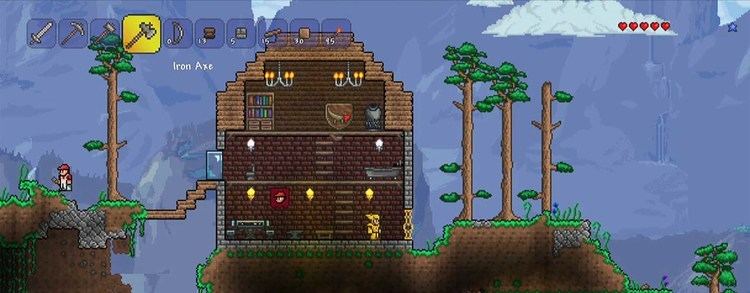
The player can encounter many different enemies in Terraria, such as simple slimes, zombies, demon eyes, and various region-specific enemies. The occurrence of certain enemies depends on several factors including time, location, random events, and player interactions. The player can fight against enemies with swords, bows, guns, magic spells, and other weapons. The player may also battle boss monsters with a number of different combat mechanics that can drop rare items and large amounts of in-game currency. All bosses can be summoned by using certain items, destroying blocks through the world, or randomly when certain criteria are met. Several of the bosses can spawn naturally in certain places and times. The defeat of these bosses is often tied to in-game progression. For example, the Dungeon is inaccessible before Skeletron's defeat.

By completing specific goals (such as defeating a boss or obtaining a gun), players can attract non-player characters (NPCs) to occupy structures or rooms they have built, such as a merchant, nurse, or wizard. Some NPCs can be acquired by finding them throughout the world and will then reside in the player's house. Players may then buy or sell items and certain services from NPCs with coins found in the world. Some NPCs cannot currently be found in the mobile versions of the game. The game includes a currency system in the form of coins that can be primarily used to complete transactions with NPCs. Coins can be obtained by slaying monsters, finding treasure, and selling items to NPCs.
The game recognizes many different biomes and areas, defined by the blocks that exist in the vicinity, each home to a unique set of enemies. If the player journeys to the Underworld and summons and defeats a boss there called the Wall of Flesh, the game enters "hard mode", which adds many new and much stronger enemies throughout the world, as well as new NPCs, bosses, ores, and items.
The game also features an expert mode difficulty. Enabled when creating a world, expert mode increases the difficulty of the game by doubling the health and attack of monsters and bosses, further increasing the strength of weaker enemies after hardmode, giving the bosses new attack patterns, decreasing the effectiveness of life regeneration, and other tweaks. To deal with the higher attack damages of expert mode the defense statistic is more effective than in normal mode. In addition to the higher difficulty level, expert mode increases the chance for enemies to drop rare items, and adds new items that can only be obtained by defeating the bosses on expert mode.
Development and release
Terraria was developed by Re-Logic beginning in January 2011, and is built on the Microsoft XNA framework. Re-Logic was composed of Andrew Spinks, who designed and programmed the game, Finn Brice, who along with Spinks did the graphic design for the game, and Jeremy Guerrette, who was a production assistant at Re-Logic, but left shortly after the game's release. The music was composed by Scott Lloyd Shelly. The game was released for Microsoft Windows on May 16, 2011.
Post-launch, the game has been updated on multiple occasions. In December 2011, Re-Logic updated Terraria to version 1.1, adding new monsters, bosses, NPCs, and items. The update also included improvements to the game's world generation technology and lighting system. In February 2012, the developers announced that they would not be continuing active development, but would release a final bug-fix patch. However, development resumed in 2013 with Spinks asking the community for ideas and features to include in a future content update.
In September 2012, Spinks announced that Engine Software and 505 Games would be porting Terraria to Xbox 360 and PlayStation 3. The game was released for Xbox 360 via Xbox Live Arcade on March 27, 2013. The PlayStation 3 version was released via the PlayStation Network in North America on March 26, 2013 and in Europe and Australia on May 15, 2013. Shortly after the initial console release, 505 Games announced Terraria for PlayStation Vita; it was released in Europe on December 11, 2013, and in North America on December 17, 2013. Spike Chunsoft localized the PlayStation 3 and Vita versions for release in Japan, including exclusive items such as a costume based on Monokuma from Danganronpa: Trigger Happy Havoc. In May 2013, 505 Games announced a mobile version of Terraria ported by Dutch studio Codeglue for Android, iOS, and Windows Phone. It was released for iOS on August 29, 2013, and for Android on September 13, 2013. The Windows Phone version was released on September 12, 2014.
In October 2013, Re-Logic released version 1.2 for Terraria on Windows after nine months in development. The update added a host of new mechanics, gameplay changes, and graphics adjustments. After the 1.2 update was released the game returned to receiving continuous updates, including Halloween and Christmas updates which expanded the endgame significantly. The console and mobile versions received update 1.2 in 2014. Terraria became DRM-free on October 2, 2014, when it was released on GOG.com.
A downloadable version of Terraria was released for PlayStation 4 on November 11, 2014, and Xbox One on November 14, 2014, with a retail release on December 2, 2014. In September 2014, Re-Logic announced that Terraria would be coming to OS X and Linux. They were both released on August 12, 2015. The Nintendo 3DS version was first released on the Nintendo eShop on December 10, 2015. A Wii U version was released on the eShop in June 2016.
It was announced that version 1.3, the game's third major content update, would be the last on which Spinks would work personally, and that the developers Yorai Omer and Skiphs would take over programming, and Whitney Baird (a.k.a. Cenx), would take over as lead designer. Version 1.3 was released on June 30, 2015, adding even more items, events, enemies, bosses, and gameplay features. During July 2016, Cenx announced that 1.3 for mobile is set for release in 2017.
Reception
Terraria received favorable reviews from critics, according to aggregate review website Metacritic. A review for Destructoid included praise for Terraria as "full of depth". Another reviewer praised Terraria's integration of some of Minecraft's concepts into two dimensions.
GameSpot praised Terraria's exploration and feeling of accomplishment but criticized its lack of tutorial or explicit directions. IGN praised the game, claiming that Terraria: "expands on the familiar sandbox gameplay with a greater emphasis on combat and adventure." Terraria received the #1 of 2011 Indie of the Year Player Choice on IndieDB.
Despite using 2D graphics, Terraria has been alluded to and described as a Minecraft clone by various video gaming media outlets.
Sales
Terraria sold 200,000 copies in the first nine days following its initial release, where it remained on Steam's top sellers for the first week of its release. Within a month, Terraria had sold over 432,000 copies. By the time of the 1.3 update in June 2015, over 12 million copies of Terraria were sold across all platforms, with that number increasing to over 20 million by February 2017.
Sequels
In October 2013, Spinks announced that he was planning Terraria 2, stating that the game was planned to have an unlimited number of worlds, and would be significantly different from the original game.
Another game set in the Terraria universe, Terraria: Otherworld was announced in February 2015. Otherworld tasks the player with trying to purify the world of the Corruption. This is to be achieved mainly by finding and activating "purifying towers" that push back the spread of the Corruption. Otherworld will include more strategy and role-playing elements, such as a new tower defense gameplay element, a skill tree, and an actual storyline to follow. The release date is currently set for 2017 for Windows, OS X, PlayStation 4, and Xbox One.
